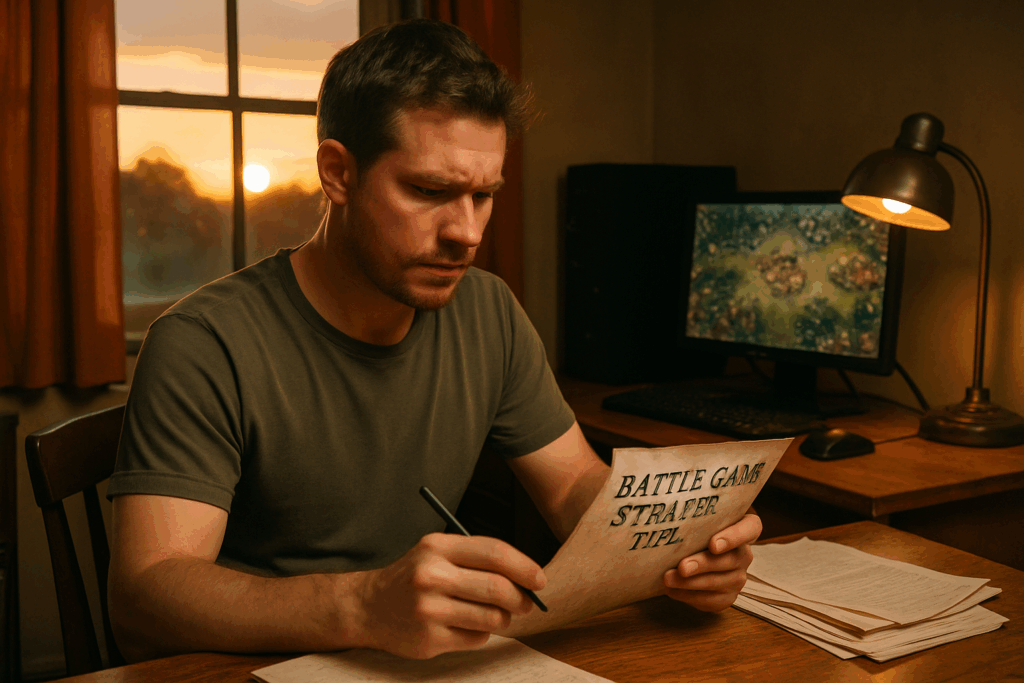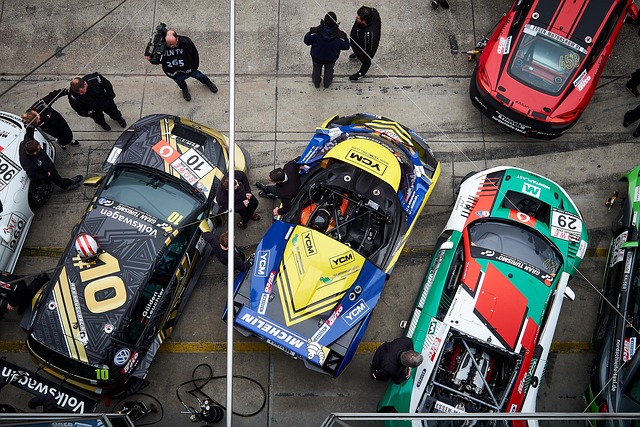Battle royale games are built on a simple but gripping premise: drop a bunch of players into a shrinking map and let them fight until only one is left standing. It’s part survival, part shooter, part chaos. The genre thrives on unpredictability and fast decisions.
At the core are a few mechanics that define the experience. First is the shrinking zone — a mechanic that forces players into tighter spaces over time, upping the danger and speeding up the match. Then there’s the last-player-standing goal, either solo or in squad mode. Add to that the loot system — players land with nothing and scramble to grab weapons, gear and health from supply drops or buildings. The mix of gear, positioning, and timing makes every match feel different.
The genre exploded with heavyweights like PUBG and Fortnite. PUBG brought gritty realism and long-range tension, while Fortnite shook things up with cartoon visuals and building mechanics. Apex Legends added squad-based tactics and unique character abilities. Warzone focused on raw gunplay and large maps. Each one hits a slightly different note, but the core feeling remains: stay alive, outthink everyone else, and be the last one standing.
Choosing where to start your vlogging content around gaming? It helps to understand the terrain: PC, console, and mobile each come with pros and cons.
PC gives you customization, graphic power, and mod support. Great for creators who want control and crisp visuals. But it’s also the most expensive entry point and comes with a steeper learning curve for casual gamers.
Consoles like PlayStation and Xbox are plug-and-play, stable, and widely adopted. They’re a solid middle ground. Not as customizable as PCs, but way less hassle. Just boot and go. Ideal for story-driven games or competitive titles with huge online communities.
Mobile leads in accessibility. Literally anyone with a phone can start. Lighter gameplay, snackable content, and a massive audience—especially globally. But it’s limited in control precision and depth. Not the turf for tech-heavy showcases, but gold for casual or lifestyle blends.
As for the games? Competitive titles like Call of Duty or Apex Legends demand sharp reflexes and stronger hardware. Casual-friendly games such as Animal Crossing or Stardew Valley lean into narrative, creativity, and community—easier to pick up, and easier to turn into long-running vlog series.
If you’re just getting started, think about your strengths. Are you here to compete or connect? Comfortable with complex settings or want something simpler? The right choice isn’t what’s most popular—it’s what helps you hit record without hesitation.
Hot drops or quiet starts—the choice says more about your playstyle and learning curve than you might think. Hot drops throw you straight into the fire. Great for fast-track learning, quick reflex building, and chaos management. Bad for survival rates if you’re not up to speed. Quiet starts are the opposite—slow, strategic, less action up front, but more time to loot and plan. If you’re new or refining mechanics, quiet drops give you space to breathe.
Looting smart matters more than just picking up everything in sight. Learn your weapon tiers. Prioritize shields, meds, and ammo over flashier gear you won’t use. Stick to a route, clear buildings smooth, and don’t break rhythm. Early eliminations usually come down to bad rotations or sloppy looting. Avoid both by scanning surroundings and keeping a mental map of enemy landing spots.
Some areas are always hot. Think Tilted-style zones, high-tier loot names, or flashy POIs at the center of the map. High-risk, high-reward. You win those, you’re set. You lose, you’re back in the lobby. It’s fine to roll the dice—just know when you’re gambling and when you’re playing long.
Adapt. Know the difference between reckless and aggressive. And pick drops that train your weaknesses, not just stroke your ego.
Weapons come in flavors. You’ve got your starter guns, your mid-tier mainstays, and the rare top-tier gear everyone fights over. The trick isn’t always picking the best on paper but choosing what fits your rhythm. Fast shooter? Lean toward SMGs or shotguns. Prefer distance and control? Go DMR or sniper. Tier lists matter, but playstyle matters more.
Armor and shields? They’re survival insurance. A lot of fights come down to who took the time to upgrade. Gray armor won’t save you in a purple world. Keep upgrading when possible. Shields are your reset button mid-fight. Know when to disengage, shield up, and go again. If you’re just charging every time, you’re easy to read—and easier to beat.
Now for the loadout glue. Healing items, grenades, smoke bombs, and utility tools are where better players widen the gap. Always carry at least one quick-heal and one full-recovery item. Grenades aren’t just for damage. They’re pressure tools, door openers, and finishers. Utility like smoke or flash is high-risk-high-reward. Learn it, don’t ignore it.
In short—your inventory is a toolkit. Treat it that way. Pick what makes sense for how you fight. And if you’re not thinking about balance? You’re already behind.
Mastering Your Loadout and Playstyle
In fast-paced lobbies, your approach matters just as much as your aim. Are you the type to push into chaos, hold high ground, or wait for the perfect third-party moment? Picking a clear playstyle—aggressive, defensive, or opportunistic—lets you make faster choices and reduces hesitation under fire.
Your loadout needs to match that energy. Aggressive players lean into shotguns paired with ARs to dominate close-range fights. Defensive setups trend toward sniper and SMG combos—sharp burst damage with quick resets. Those who adapt on the fly mix tools based on the zone, team comp, or loot luck.
And always have a backup plan. Maybe it’s an exit route, an extra shield stack, or a switch weapon when ammo’s low. The second things go south, hesitation kills. Flexible players don’t just survive; they control the narrative of the match.
If you’re just picking up steam or trying to break a plateau, knowing your approach and gearing around it is the simplest upgrade you can make.
Survive and Dominate: Advanced Tactical Awareness
Staying alive and finishing strong in any competitive battle royale depends on more than just weapon skill. Smart players actively track the environment, manipulate positioning, and anticipate threats. Here are three tactics to help sharpen your gameplay in the mid to late game.
Know Your Zone Timers
Map awareness is essential. Players who constantly track storm or ring timers will stay ahead of the pressure—and the competition.
- Learn the exact moment each new zone begins collapsing
- Plan your movements not just to stay safe, but to gatekeep others
- Use rotations to control timing and avoid panic repositioning
Being predictable puts you in danger. Staying one step ahead of the zone makes you harder to trap and easier to position for success.
Watch for Third Party Threats
Nothing ruins a solid fight like getting jumped by a third squad. To minimize this risk—or turn it to your advantage—you need to:
- Listen for distant gunfire and track how long fights are lasting
- Avoid prolonged engagements in open areas
- Let enemies battle it out, then clean up weakened survivors
Want to flip the script? Set up around likely fight zones and become the third party yourself. Victory often goes to those who wait.
Use Terrain and High Ground to Your Advantage
Positioning is power. Smart use of terrain creates cover, vision, and control.
- Always look to control high ground when possible
- Use natural obstacles, rocks, or buildings to break line of sight
- Get vertical for clear views and cleaner shots during fights
Players who win late-game circles usually do so by owning smart positions. Whether you hold a cliffside, rooftop, or ridge, terrain gives you options and forces enemies to fight on your terms.
In close fights, panic is your worst enemy. The players who stay cool under pressure are the ones landing more shots. That starts with aim tracking and crosshair discipline. Don’t just spray and pray. Keep your crosshair at head level, line it up before turning corners, and let your eyes lead your hands. It takes patience, but it pays off.
Movement is just as critical. Strafing isn’t just style—it messes with your enemy’s aim while keeping you mobile. Add jumps or crouches mid-gunfight to throw them off. But don’t overdo it. Random movement without intention makes you predictable. Keep it sharp.
Know when to push and when to reset. If you’ve got the health, the numbers, and the angle—go. But if you’re outgunned or outpositioned, back off. Regroup, reposition, come back smarter. It’s not running. It’s surviving—and setting up your win.
Pressure makes or breaks a vlogger, especially when the algorithm doesn’t favor you or when the comment section turns hostile. Stay calm. Most setbacks can be navigated with control and a clear head. This isn’t about fake positivity—it’s about maintaining focus so you can respond instead of react.
Also, don’t tilt. Every day, thousands of creators upload videos that don’t perform. That’s not failure. That’s the baseline. The difference comes from what happens next: whether you spiral or recalibrate. The creators who stick around long enough to win are the ones who treat loss like intel, not defeat.
Lastly, study your flops. Break down low-performing videos, figure out where people dropped off, and be honest about what didn’t land. Wins are nice, but they don’t always teach. Your mistakes will. If you can look at your work without flinching, you’re already leveling up.
Leveling up your gameplay isn’t just about grinding matches. Training modes and low-stakes games are where you go to work on the fundamentals—especially aim. Strip away the pressure, focus on precision, and log those reps. Think of it like the gym for your crosshair.
Next, study the pros. Streaming platforms are literal war rooms if you know what to look for. Watch how top players position, rotate, or respond under fire. Break it down like game tape. The goal isn’t to copy—it’s to understand the “why” behind smart plays, then apply it under your own pressure.
If you’re playing duos or squads, communication becomes non-negotiable. Callouts should be fast, clear, and useful. No yelling, no vagueness. “Two pushing left” beats “help!” every time. Set up basic roles and sync movements. Good teams don’t just react—they anticipate together. That’s the real edge.
Level up faster by thinking sharper. Mastery doesn’t happen on autopilot.
Once you’ve got the fundamentals down—movement, aim, resource management—it’s time to raise your ceiling. Higher-level plays separate average creators from skilled tacticians, especially in real-time strategy spaces. It starts with reading the kill feed like a second screen. Who’s getting eliminated? Where are they from? That data tells a story about positioning and enemy pressure.
Next comes predicting rotations. Opponents rarely wander without purpose. Spot patterns. Learn how players wrap around objectives or reposition after fights. Timing your move to intersect theirs is less guesswork, more soft science.
There’s also the mind game: baiting opponents. Let them think you’re weak, retreating, exposed—then reverse the script. It’s strategy by misdirection, and when executed right, it swings momentum to your side fast.
Want more tips like these? Check out 10 Advanced Tips for Dominating Real-Time Strategy Titles.
Improvement doesn’t come from waiting—it comes from showing up again and again. You film, you edit, you post. Then you look back, figure out what clicked (or flopped), and do it better next time. It’s less about chasing perfection and more about stacking reps.
But burnout is real. Stepping away sometimes is smart strategy, not weakness. A day off can sharpen your eye and reset your brain. When the grind starts dulling the content, that’s the moment to pause.
And don’t forget: this started as fun. Vlogging isn’t a test—it’s a playground. So tweak formats, try wild edits, lean into weird ideas. The algorithm might run on patterns, but your creativity doesn’t have to.
In a world of chaos and loot, control your learning curve. Execute, adapt, and keep dropping in.





